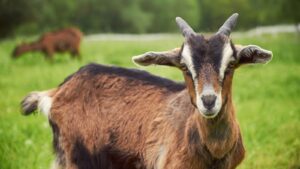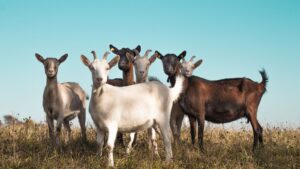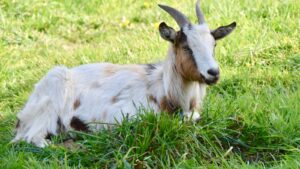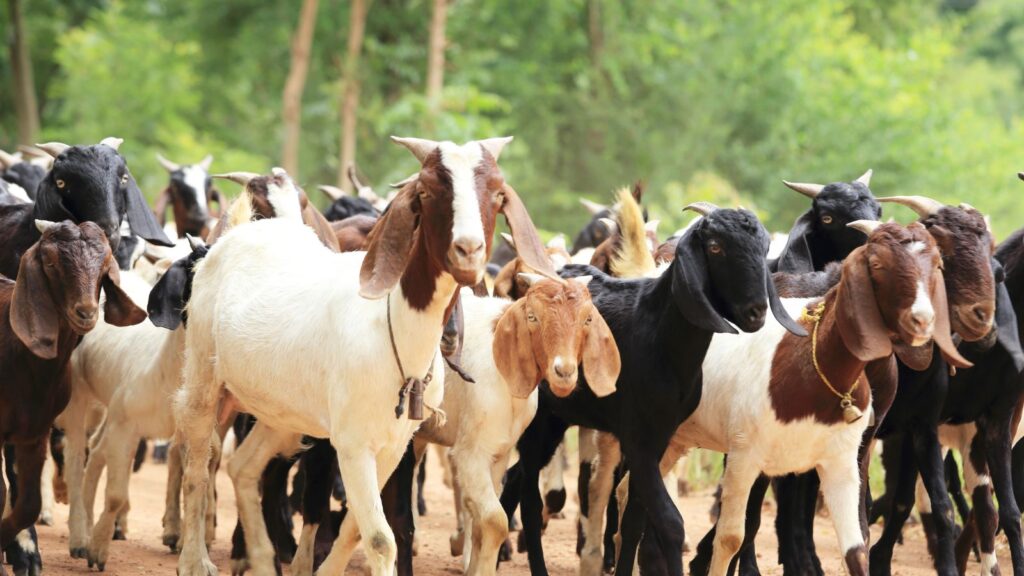Outline:Pp3dtuxd1xy= Goat

Adult goats vary in size, with breeds like the Nigerian Dwarf weighing around 75 lbs and others like the Boer reaching up to 300 lbs. They possess strong, nimble limbs allowing them to navigate rocky terrains efficiently. Notably, their horizontal, slit-shaped pupils grant them a wide field of vision, aiding in predator detection.
Goats display inquisitive and social behaviors. They thrive in herds, relying on group dynamics for safety and social interaction. Their playful nature includes climbing and exploring their surroundings.
Habitat and Behavior
 Goats exhibit distinct social structures and feeding habits that reflect their adaptability and resilience. Their behavior and interaction with the environment significantly contribute to their successful domestication and ecological roles.
Goats exhibit distinct social structures and feeding habits that reflect their adaptability and resilience. Their behavior and interaction with the environment significantly contribute to their successful domestication and ecological roles.
Goats naturally form herds that provide protection and social interaction. Within these herds, a hierarchical structure emerges with a dominant leader, often a mature female. This organization ensures efficient movement and resource sharing. Juveniles learn survival skills through interaction with adults, highlighting the importance of social bonds. Goat herds frequently display cooperative behavior, especially in raising young and alerting each other of potential threats.
Known as opportunistic feeders, goats adapt their feeding habits based on available resources. They primarily browse on shrubs, bushes, and trees, preferring a diet rich in variety. This flexibility helps control invasive plant species and maintain ecological balance in various habitats. Their ability to thrive on diverse vegetation makes them ideal for environments ranging from arid regions to lush pastures.
Benefits of Raising Goats
Raising goats offers multiple benefits, enhancing both economic stability and environmental sustainability.
 Goats contribute significantly to economic growth through diverse products. Farmers gain income from goat milk, which is popular for its nutritious value and hypoallergenic properties, compared to cow milk. Some breeds, like Saanen and Nubian, excel in milk production. Meat from goats, particularly Boer and Kiko breeds, is lean and in demand globally, providing substantial market opportunities. Fiber from goat breeds, such as Angora and Cashmere, commands high prices in the textile industry. Additionally, goats require lower maintenance costs than larger livestock, offering a cost-effective farming solution.
Goats contribute significantly to economic growth through diverse products. Farmers gain income from goat milk, which is popular for its nutritious value and hypoallergenic properties, compared to cow milk. Some breeds, like Saanen and Nubian, excel in milk production. Meat from goats, particularly Boer and Kiko breeds, is lean and in demand globally, providing substantial market opportunities. Fiber from goat breeds, such as Angora and Cashmere, commands high prices in the textile industry. Additionally, goats require lower maintenance costs than larger livestock, offering a cost-effective farming solution.
Goats play a pivotal role in environmental management. Their browsing habits help control invasive plant species, contributing to habitat restoration. By selectively grazing on shrubs and bushes, goats aid in maintaining ecological balance. This capability makes them valuable in regenerative agriculture, promoting soil health and reducing the need for chemical herbicides. Their adaptability to diverse climates and terrains allows them to thrive in challenging environments, further supporting sustainable land management practices.
Sustainable Farming
Goats continue to be invaluable assets in both agricultural and ecological spheres. Their adaptability and resilience make them ideal for sustainable farming practices while their diverse products offer significant economic benefits. As interest in regenerative agriculture grows, goats are poised to play an even more crucial role. Their unique characteristics and behaviors not only enrich cultural narratives but also maintain ecological balance. Despite the challenges in goat farming, their contributions to human society remain unmatched, ensuring their place as a vital component of global agriculture and environmental stewardship.
